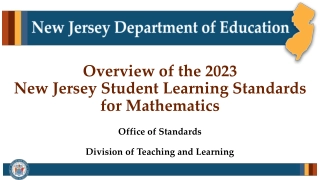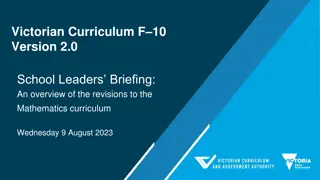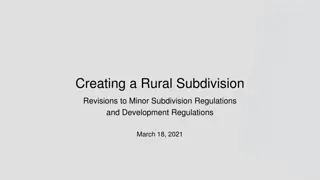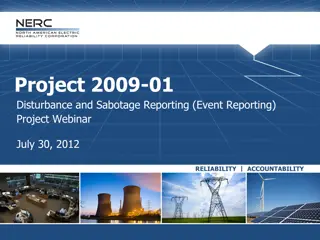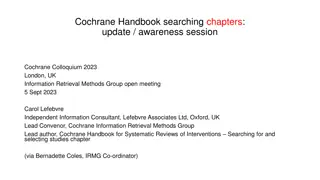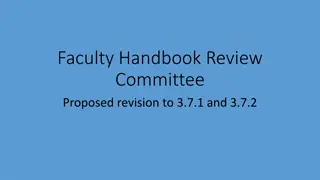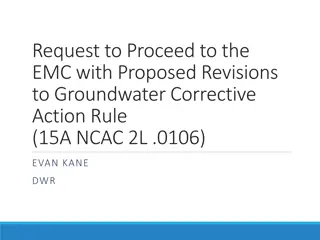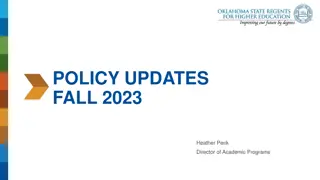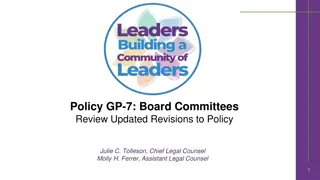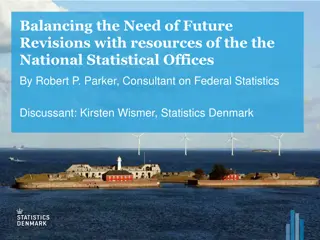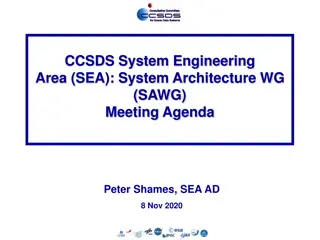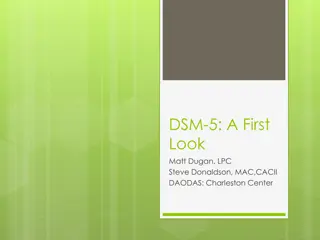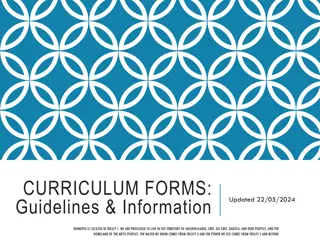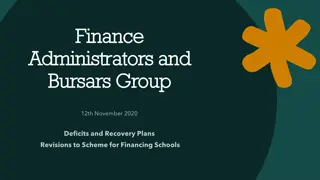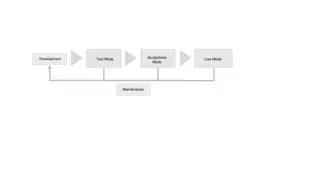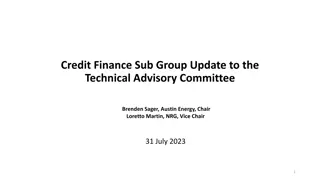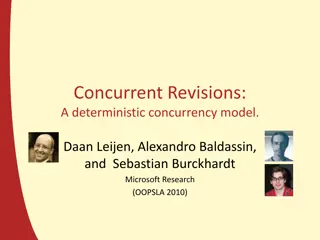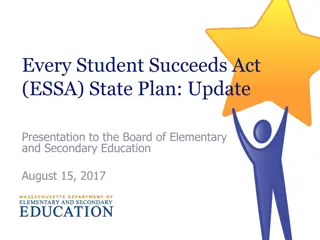
Enhancing Language Skills through ELA Outcomes
Explore the integration of language principles in ELA outcomes, focusing on Standard English conventions, vocabulary acquisition, and comprehension strategies. Discover the shift towards multimedia and the importance of effective communication in diverse contexts.
Uploaded on | 0 Views
Download Presentation

Please find below an Image/Link to download the presentation.
The content on the website is provided AS IS for your information and personal use only. It may not be sold, licensed, or shared on other websites without obtaining consent from the author. If you encounter any issues during the download, it is possible that the publisher has removed the file from their server.
You are allowed to download the files provided on this website for personal or commercial use, subject to the condition that they are used lawfully. All files are the property of their respective owners.
The content on the website is provided AS IS for your information and personal use only. It may not be sold, licensed, or shared on other websites without obtaining consent from the author.
E N D
Presentation Transcript
REVISIONS SOME, NONE, SIGNIFICANT 1
KEEP IN MIND: 2 RULE VS. GUIDANCE GUIDING PRINCIPLES LINKED TO ELA OUTCOMES EXPECTATION OF MEDIA LITERACY EMBEDDED
Language Moved to the first position No significant content change Begin with language Informs complexity of texts Informs reading strategies Applies to all strands
CURRENT PROPOSED Conventions of Standard English Conventions of Standard English 4 1. Demonstrate command of the conventions of standard English grammar and usage when writing or speaking. Demonstrate command of the conventions of standard English capitalization, punctuation, and spelling when writing. Knowledge of Language 1. Demonstrate command of the conventions of Standard English grammar and usage when writing or speaking. Demonstrate command of the conventions of Standard English capitalization, punctuation, and spelling when writing. Knowledge of Language 2. 2. 3. Apply knowledge of language to understand how language functions in different contexts, to make effective choices for meaning or style, and to comprehend more fully when reading or listening. 3. Apply knowledge of language to understand how language functions in different contexts, to make effective choices for meaning or style in writing and speaking, and to comprehend more fully when reading or listening. Vocabulary Acquisition and Use Vocabulary Acquisition and Use 4. Determine or clarify the meaning of unknown and multiple-meaning words and phrases by using context clues, analyzing meaningful word parts, and consulting general and specialized reference materials, as appropriate. Demonstrate understanding of word relationships and nuances in word meanings. Acquire and use accurately a range of general academic and domain-specific words and phrases sufficient for reading, writing, speaking, and listening at the college and career readiness level; demonstrate independence in gathering vocabulary knowledge when encountering an unknown term important to comprehension or expression 4. Use context clues, analyze meaningful word parts, and consult general and specialized reference materials as appropriate to determine or clarify the meaning of unknown and multiple-meaning words and phrases from grade level content. Demonstrate understanding of figurative language, word relationships, and nuances in word meanings sufficient for reading, writing, speaking, and listening. Acquire and use accurately a range of general academic and domain-specific words and phrases sufficient for reading, writing, speaking, and listening; demonstrate independence in gathering vocabulary knowledge when encountering an unknown term important to comprehension or expression. 5. 5. 6. 6.
Speaking & Listening Combined similar standards Presentation of knowledge and ideas more explicitly linked to writing Multi-media formats expected essentially elevates viewing and listening to text status
CURRENT PROPOSED Comprehension and Collaboration Comprehension and Collaboration 6 1. Prepare for and participate effectively in a range of conversations and collaborations with diverse partners, building on others ideas and expressing their own clearly and persuasively. Integrate and evaluate information presented in diverse media and formats, including visually, quantitatively, and orally. Evaluate a speaker s point of view, reasoning, and use of evidence and rhetoric. 1. Prepare for and participate in conversations across a range of topics, types, and forums, building on others ideas and expressing their own. Integrate and evaluate information presented in diverse media and formats, including point of view, reasoning, and use of evidence and rhetoric. 2. 2. 3. Presentation of Knowledge and Ideas Presentation of Knowledge and Ideas 4. Present information, findings, and supporting evidence such that listeners can follow the line of reasoning and the organization, development, and style are appropriate to task, purpose, and audience. Make strategic use of digital media and visual displays of data to express information and enhance understanding of presentations. Adapt speech to a variety of contexts and communicative tasks, demonstrating command of formal English when indicated or appropriate. 1. Present information and supporting evidence appropriate to task, purpose, and audience so listeners can follow the line of reasoning and incorporate multimedia when appropriate. Adapt speech to a variety of contexts, audiences, and communicative tasks. 2. 5. 6.
Reading Combined 4 columns into one no distinction for the different text types or disciplines. Placed foundational skills first in reading and expanded K-12
Foundational Skills Foundational Skills 9 1. Print Concepts: Demonstrate an understanding of the organization and basic features of print. 2. Phonological Awareness: Demonstrate understanding of words, syllables, and sounds (phonemes). 3. Phonics and Word Recognition: Know and apply grade- level phonics and word analysis skills in decoding words. 4. Fluency. 1. Print Concepts: Demonstrate an understanding of the organization and basic features of print. 2. Phonological Awareness: Demonstrate understanding of words, syllables, and sounds (phonemes). 3. Phonics and Word Recognition: Know and apply grade- level phonics and word analysis skills in decoding words. Key Ideas and Details Key Ideas and Details 1. Read closely to determine what the text says explicitly and to make logical inferences from it; cite specific textual evidence when writing or speaking to support conclusions drawn from the text. 2. Determine central ideas or themes of a text and analyze their development; summarize the key supporting details and ideas. 3. Analyze how and why individuals, events, and ideas develop and interact over the course of a text. 4. Read various texts closely to determine what each text explicitly says and to make logical inferences; cite specific textual evidence to support conclusions drawn from the texts. 5. Provide an accurate summary of various texts; determine the central idea(s) or theme(s) and analyze its development throughout each text. 6. Analyze how and why individuals, events, and ideas develop and interact over the course of a text.
Craft and Structure Craft and Structure 4. Interpret words and phrases as they are used in a text, including determining technical, connotative, and figurative meanings, and analyze how specific word choices shape meaning or tone. 5. Analyze the structure of texts, including how specific sentences, paragraphs, and larger portions of the text (e.g., a section, chapter, scene, or stanza) relate to each other and the whole. 6. Assess how point of view or purpose shapes the content and style of a text. Integration of Knowledge and Ideas 7. Interpret words and phrases as they are used in various texts, including determining technical, connotative, and figurative meanings, and analyze how specific word choices shape meaning or tone. 8. Analyze the structure of various texts, including how the features and components relate to each other and the whole. 9. Assess how perspective or purpose shapes the content and style of various texts. 10 Integration of Knowledge and Ideas 7. Integrate and evaluate content presented in diverse media and formats, including visually and quantitatively, as well as in words.* 8. Delineate and evaluate the argument and specific claims in a text, including the validity of the reasoning as well as the relevance and sufficiency of the evidence.1 9. Analyze how two or more texts address similar themes or topics in order to build knowledge or to compare the approaches the authors take. 10. Evaluate the argument and specific claims in various texts. 11. Analyze and evaluate content presented in various texts (e.g. literary, historical, visual, artistic, quantitative, and technological).
Range of Reading and Level of Text Complexity Fluency 12. Read with sufficient accuracy and fluency to support comprehension 10.Read and comprehend complex literary and informational texts independently and proficiently. 11
Writing Text types moved out of rule can become guidance Many standards combined for efficiency Application to other content areas expected addressed in preamble
Inquiry to Build and Present Knowledge 13 Use an inquiry process to gather relevant, credible information/evidence from a variety of sources (e.g., print, digital, discussions, etc.) that build understanding of and lead to conclusions about a subject under investigation.
14 Process and Production Develop, strengthen, and produce polished writing by using a collaborative process that includes the age-appropriate use of technology.
Composing for Audience and Purpose 15 Routinely produce a variety of clear and coherent writing in which the development, organization, and style are appropriate to task, audience, and purpose while avoiding plagiarism.
Interpreting the standards: our recent experience 16 What if we organized instruction, curriculum design, units of study, and literacy development around these three pillars that are now the writing standards?
Language 17 The order is important Speaking & listening Reading Writing
Task: read and annotate 18 Read and annotate ELA CCSS_2020 Maine Anchor Standards Compared: note explicit and implicit connections to media literacy; indicate explicit and implicit connections to other strands/standards.
Task: read and annotate 19 Read and annotate Updates Explained: highlight information that may help to guide or direct your curriculum review and instructional planning.
Next: 20 the deep dive


